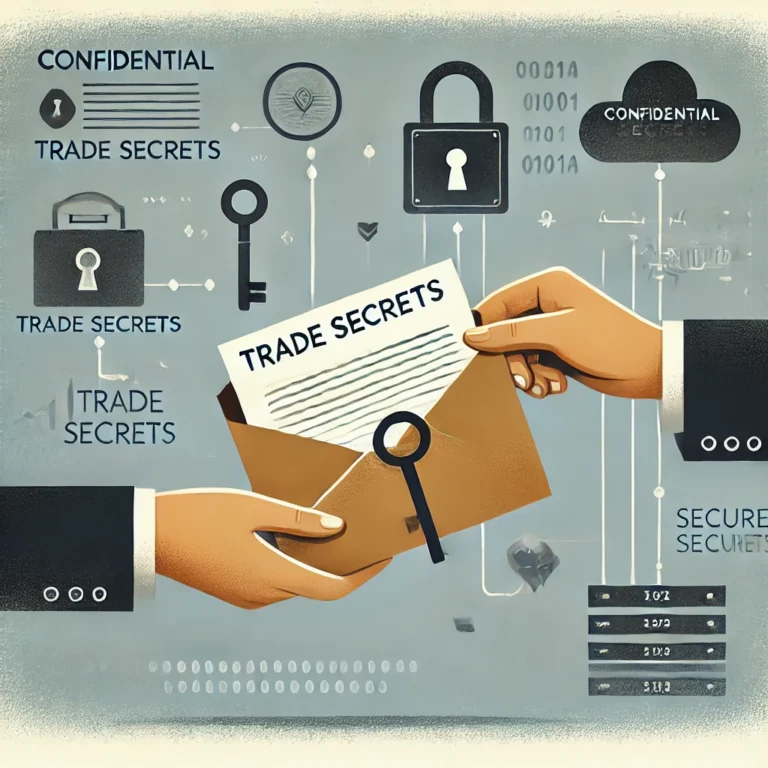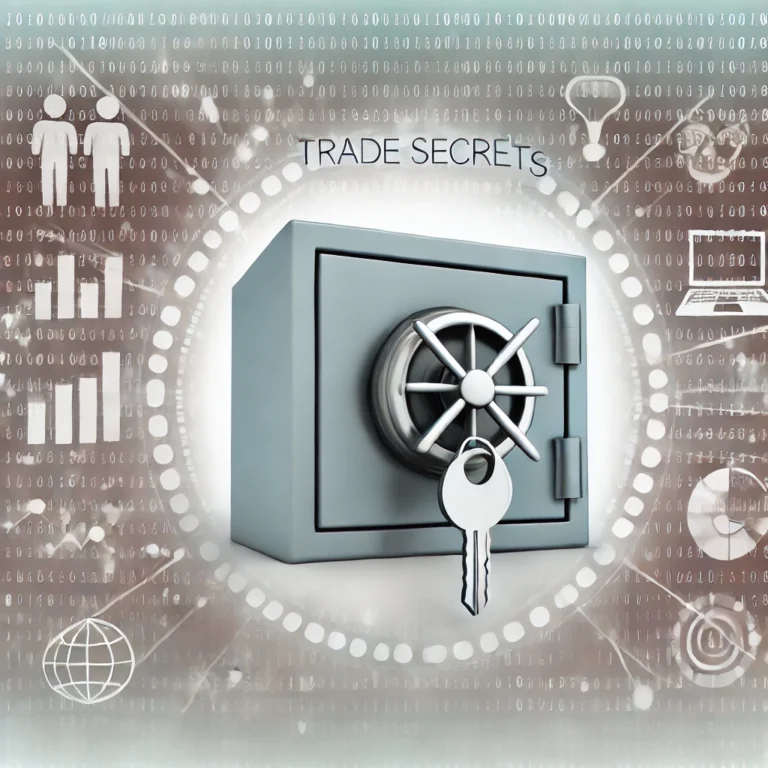Call us now:
The disclosure of trade secrets in Vietnam occurs when information considered a trade secret and not intended for the public is revealed to outsiders without the consent of the owner.

What is a Company’s Trade Secret?
A trade secret is non-public information that a company keeps confidential to gain a competitive advantage. This secret may include formulas, manufacturing processes, customer lists, business strategies, software, databases, and any other information that the company considers important and does not want to disclose externally. To be considered a trade secret, the information must:
- Bring economic value to the company because it is not known by the public or competitors.
- Be kept confidential through reasonable measures to maintain its secrecy.
- The company must consider it a secret and intends to keep it undisclosed.
Examples of Trade Secrets
Here are some specific examples of trade secrets illustrating their diversity and importance in the business environment:
- Coca-Cola Formula: Perhaps one of the world’s most famous trade secrets, the Coca-Cola formula has been kept secret since the late 19th century. Only a few senior employees know about this formula, and it is said to be stored in an inaccessible safe.
- Intel’s Manufacturing Process: Intel, one of the world’s largest chip manufacturers, keeps its chip manufacturing process a secret. This process includes manufacturing technology, chip design, and testing methods that help Intel maintain its leading position in the technology industry.
- Salesforce’s Customer List: Salesforce, a company offering cloud-based customer relationship management solutions, considers its customer list a trade secret. This list includes contact information and transaction history of customers, a valuable resource for sales and marketing strategies.
- Google’s Search Technology: Google’s search technology and ranking algorithms are examples of trade secrets. These algorithms determine how information is sorted and displayed to users, helping Google maintain its position as the leading search engine.
- KFC’s Recipe: The “11 herbs and spices” recipe used to marinate KFC’s chicken is closely guarded, similar to Coca-Cola. This recipe creates the distinctive flavor of KFC’s fried chicken, an important factor in KFC’s global success.
These examples illustrate how companies from various industries have trade secrets and the importance of protecting this information to maintain a competitive advantage and market success.
What is Technological Secret?
A technological secret is a type of trade secret related to knowledge, information, processes, methods, formulas, designs, or a combination of these elements through which a company can produce a product or provide a service with a competitive advantage. These technological secrets are not only the core of many inventions and innovations but also a key factor in maintaining a company’s leadership and exclusivity in a specific market.
Technological secrets include, but are not limited to:
- Manufacturing formulas and technologies: This can be chemical formulas, material processing technology, special production processes, or any other methods through which products are created or improved.
- Algorithms and software: Proprietary algorithms or software source code through which IT, big data, artificial intelligence, and other fields can develop products and services with unique and outstanding features.
- Designs and technical drawings: Detailed 3D models and technical designs describing how a product is built or a system operates.
- Testing and quality processes: Specific methods and standards a company uses to ensure the quality of its products or services, as well as testing processes to detect faults or improve performance.
To be considered a trade secret, this information technology must bring economic benefits to the company because it is not publicly disclosed, and the company must implement reasonable measures to protect its confidentiality. This may include the use of non-disclosure agreements, limiting access to information, and deploying information security systems.

What is a trade secret disclosure?
Trade secret disclosure occurs when information considered a trade secret and not intended for the public is revealed to outsiders without the owner’s consent. Trade secrets are valuable because they are unknown to competitors and help the company maintain a competitive advantage. When this information is disclosed, the company may lose that advantage, face financial losses, and a decline in market position.
Disclosure can occur for various reasons, including:
- Information leaks: Information can be inadvertently or intentionally disclosed by employees, former employees, or business partners.
- Hacking and cyber attacks: Attackers can infiltrate the company’s computer systems and steal trade secrets.
- Careless disclosure: Information can be disclosed due to non-compliance with security policies, such as sharing important documents on insecure platforms or discussing trade secrets in public places.
- Betrayal: Sometimes, employees or former employees deliberately disclose trade secrets for personal reasons or to benefit a third party.
When a trade secret is disclosed, the company can take legal action to protect its interests, including suing for contract breach, trade secret law violations, and seeking damages. To prevent disclosure, companies typically adopt strict security measures, including non-disclosure agreements, limiting information access, and training employees on the importance of keeping information confidential.
How is trade secret protection implemented in Vietnam?
Protecting trade secrets is an important part of managing and safeguarding a company’s intellectual property. Here are some effective methods for protecting trade secrets:
1/ Non-Disclosure Agreements (NDAs)
Enter into non-disclosure agreements with employees, partners, and anyone who has access to trade secrets.
2/ Internal Security Policies
Develop and enforce internal security policies to control and manage access and use of trade secrets. Train employees on the importance of trade secrets and how to protect them.
3/ Physical and Technical Security Measures
Enhance physical security to control access to facilities and important documents.
Use information security technologies like encryption, firewalls, and anti-malware solutions to protect information stored on computer systems and networks.
4/ Access Management
Restrict access to trade secrets to those who need to know. Control versioning and storage to monitor changes and access to documents.
5/ Conduct Regular Audits
Periodically audit information and physical security to detect and rectify any vulnerabilities.
6/ Incident Response Planning
Develop an incident response plan to handle security issues, including trade secret disclosure.
7/ Review Commercial Contracts
Thoroughly review commercial contracts to ensure they include terms for protecting confidential information.
8/ Legal Protection
Understand trade secret protection laws in the countries and regions where the company operates to ensure compliance and utilize legal protection measures.
Implementing a multi-layered protection strategy, including legal, technical, and organizational measures, will help maximize the company’s ability to protect its trade secrets.
Contact Us Now:
DCNH LAW
Address: 38B Tran Nhat Duat, Phuoc Hoa ward, Nha Trang city, Khanh Hoa province, Vietnam.
Phone: (+84) 343320223 – 974278893
Email: dcnh.law@gmail.com




